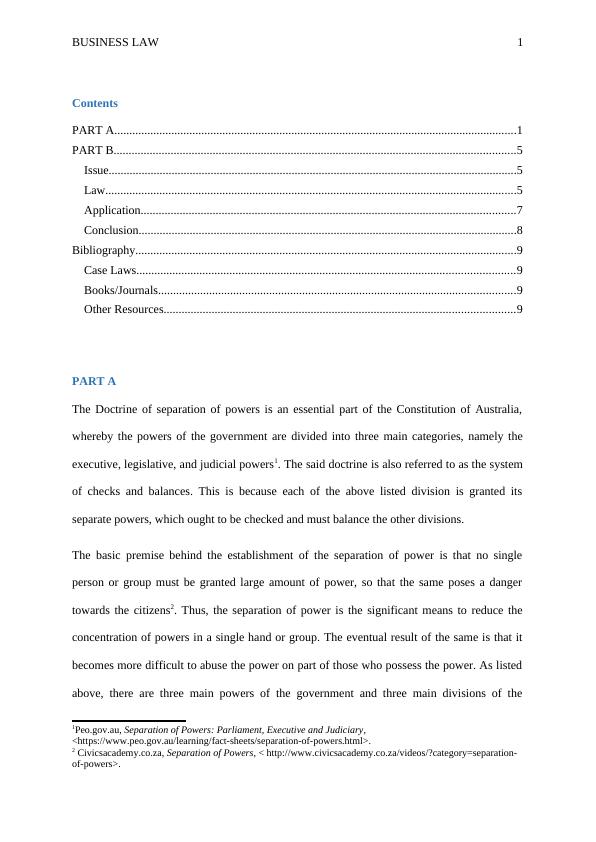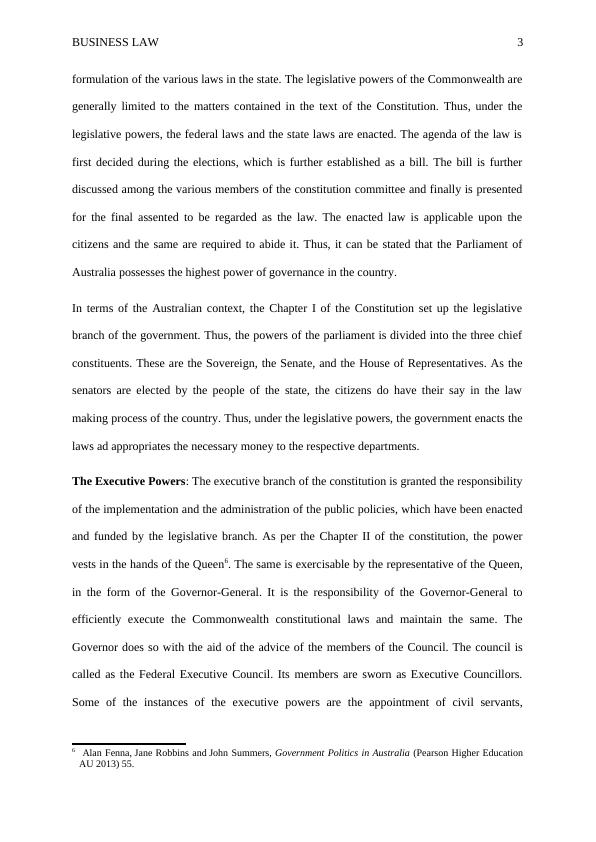Doctrine of Separation of Powers in Australia and Validity of Contracts
This assignment is an individual task that requires the use of ILAC methodology to write an essay and problem-based memorandum. It focuses on the Australian Constitution and contract formation. The assignment is worth 30% of the total mark and is due on 27th January 2019.
11 Pages2629 Words346 Views
Added on 2023-04-24
About This Document
This article explains the Doctrine of Separation of Powers in Australia and the essential components of a valid contract. It applies these principles to the case study of Events Management Ltd and Rigby Corporate Function Planners Pty Ltd to determine the validity of the contract. It concludes that as the essential conditions of the contract have not been met, the company Events Management Ltd could not force the conclusion of the sale.
Doctrine of Separation of Powers in Australia and Validity of Contracts
This assignment is an individual task that requires the use of ILAC methodology to write an essay and problem-based memorandum. It focuses on the Australian Constitution and contract formation. The assignment is worth 30% of the total mark and is due on 27th January 2019.
Added on 2023-04-24
ShareRelated Documents
End of preview
Want to access all the pages? Upload your documents or become a member.
Understanding the Doctrine of Separation of Powers in Australia and Contract Law
|14
|3282
|470
Using ILAC Methodology in Essay and Case Study for Corporate/Business Law
|13
|2957
|420
The Doctrine of Separation of Powers and Legal Analysis of an Acquisition Case in Australia
|7
|2550
|164
Doctrine of Separation of Powers in Australia: An Analysis
|8
|1845
|169
Separation of Powers in Singaporean Constitution
|11
|3322
|481
Federal and State Constitutional Law Assignment
|12
|3035
|80




